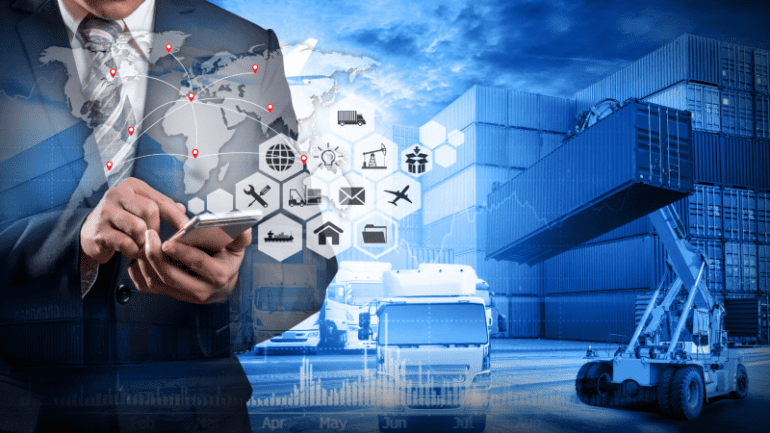TL;DR:
- AI tools like ChatGPT are poised to revolutionize global trade with data-driven insights.
- Governments and industries are adopting AI to navigate supply chain complexities post-pandemic.
- Generative AI and language-learning models offer predictive analytics for risk mitigation.
- AI simplifies trade data analysis, enhancing cross-border commerce and efficiency.
- Companies like ImportGenius leverage machine learning to recognize patterns and translate data.
- Nestle and Mercedes-Benz use AI to enhance efficiency and adapt to supply shocks.
- AI aids in understanding shifting global value chains and export strategies.
- Human nuance remains critical in negotiations despite AI advancements.
- Data accuracy challenges persist due to non-reported trade flows and geopolitical factors.
Main AI News:
The convergence of artificial intelligence with trade data has the potential to revolutionize supply chain management within the global trading ecosystem, valued at a staggering $32 trillion. As both public and private sectors seek novel ways to harness data for identifying risks and seizing opportunities, the emergence of AI tools like ChatGPT couldn’t be more timely.
Throughout the pandemic, domains such as financial services and telecommunications, along with government agencies, expedited their integration of machine-learning tools. However, the world of trade faced challenges as analog and paper-based transactions lagged behind. Now, with generative AI and language-learning models coming to the forefront after several years of trade disruptions, a golden opportunity arises for governments and corporations to optimize intricate supply networks.
Julie Gerdeman, CEO of Everstream Analytics, envisions a future marked by precise predictive analytics and informed forecasting. By assimilating data from every stage of the supply chain, decision-making could be automated, mitigating risks and disruptions. This would pave the way for resilient, sustainable, and risk-conscious supply chains.
Trade data analysis has long been a formidable task due to its inherent complexity. Navigating vast troves of shipment records across diverse entities and freight forwarders, often in unstructured datasets, has been akin to an unending struggle. However, AI tools are turning the tide, simplifying trade-data analysis and potentially streamlining the cross-border commerce engine of the global economy.
Companies like ImportGenius, based in Scottsdale, Arizona, leverage machine learning through platforms like Amazon SageMaker. This allows them to recognize customs patterns, interpret regulatory documents, and translate foreign languages. The outcome is clear and accessible trade data, which greatly eases search and analysis.
Nestle SA and Mercedes-Benz Group AG stand as examples of AI implementation in major corporations. Nestle utilizes machine learning to enhance operational efficiency, detecting product-quality issues and ensuring self-regulating manufacturing lines. Meanwhile, Mercedes-Benz employs an AI-powered platform, Omniverse, enabling swift reconfiguration of manufacturing plants in response to supply shocks.
Though AI’s impact is reverberating across industries, its potential in trade is particularly profound. Previous years focused on dismantling barriers to global movement of goods and investments. Now, with rising hurdles like tariffs and geopolitical uncertainties, the complexities challenge logistics teams to adapt. Jake Colvin, President of the National Foreign Trade Council, cautions against excessive hype, urging a distinction between short-term potential and long-term reality.
AI’s potential shines brightly in aiding comprehension of shifting global value chains. This objective was pivotal in a recent Group of 20 trade ministers’ meeting. The session endorsed a mapping framework that measures aspects like supplier concentration, trade connectivity, volatility, and industry vulnerability. The International Trade Center introduced the AI-powered Global Trade Helpdesk, matching predictive algorithms with trade data to refine export strategies.
In time, AI tools might expedite trade agreement negotiations and duty calculations. Yet, limitations persist, as certain aspects of trade negotiations necessitate human nuance. Wendy Cutler from the Asia Society Policy Institute emphasizes the irreplaceable human element in negotiations, involving comprehension, body language interpretation, and on-the-spot idea exchange.
While AI’s potential is evident, data accuracy remains a challenge due to gaps in trade statistics. Instances of non-reported trade flows, like smuggling and transshipment, pose obstacles. As evident from the absence of trade data following certain geopolitical events, political and logistical challenges persist. John Miller, Chief Economic Analyst at Trade Data Monitor, underscores the importance of data verification and cross-verification, given the intricate political dynamics.
Conclusion:
The fusion of AI and trade data presents a monumental opportunity for the market. By optimizing supply chains, predicting risks, and streamlining cross-border transactions, AI-driven insights promise to reshape the landscape of global trade. As industries leverage these advancements, the market can expect increased efficiency, adaptability, and a new era of data-driven decision-making.

